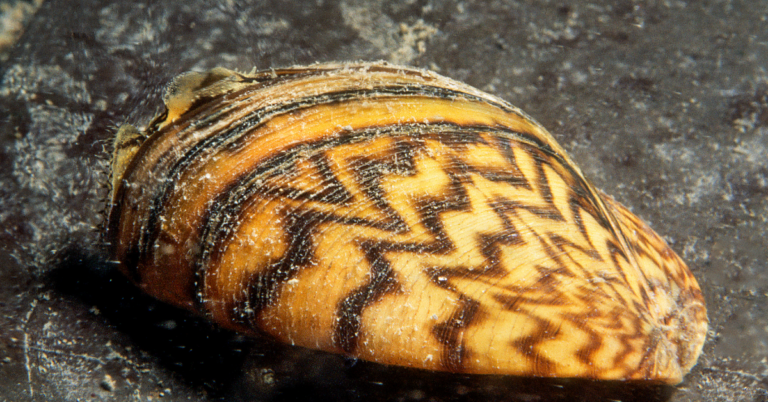By Jen Schumann | Contributor, Rocky Mountain Voice
A small intruder endangers Mesa County’s water infrastructure, agriculture, local economy and aquatic habitats, and Mesa County isn’t alone facing the threat.
Zebra mussels invade ecosystems unchecked. Their staggering reproductive rate fuels the crisis. A single female can unleash one million eggs. What’s worse is that they reach maturity in about four months. These small mussels clog pipes and drip water tubing as they multiply.
They can invade canals and rivers, and cripple irrigation systems.
This July, zebra mussel DNA was detected in the Government Highline Canal and the Colorado River.
Mesa County Commissioner Bobbie Daniel and Tina Bergonzini, general manager of the Grand Valley Water Users Association, have been taking this issue to local groups. They are sharing their concerns and what is being done to fight back.
“Everyone must understand the risks and be prepared,” Daniel said.
They say it’s vital to raise public awareness and share how residents can help.
“In Mesa County, where it’s high desert, we depend entirely on our canal system for irrigation,” Daniel said. “Without it, everything turns brown. We’d be economically devastated with a full-blown zebra mussel infestation.”
Tiny mussels can have gigantic consequences
The first national discovery of zebra mussels in our waters was in 1988. Biologists discovered them in a small lake between Lake Huron and Lake Erie.
“They originated in Ukraine and they came here in the ballasts of ships. When ships come into port, they dump their ballasts. The zebra mussels were in that water, and they started clear up in the Great Lakes,” Bergonzini shared.
Since then, they’ve spread across various waterways, wreaking havoc wherever they go. In the Great Lakes, zebra or quagga mussels infest each drop of water three times a day. Zebra mussels cause $300–$500 million in damages each year to power plants, water systems and industrial water intakes in the Great Lakes.
The problem for aquatic habitats isn’t that they make the water toxic. It’s the opposite.
“Zebra mussels clean the water so well that the native fish die because they don’t have anything to eat,” Bergonzini explained. These creatures strip the water of nutrients, starving out native species and disrupting entire ecosystems.
In Mesa County, the concern is what happens when they start clogging irrigation systems and water infrastructure.
“If we don’t act now, we risk serious harm to our water systems, agriculture and even our local economy. It’s vital that everyone in Mesa County understands how urgent this issue is,” Daniel says.
“They colonize rapidly in pipes and water systems and a small infestation could block micro-drip irrigation systems, crippling orchards and vineyards,” Bergonzini warns.
Mesa County isn’t sitting idly by. Local officials are preparing for a battle to keep zebra mussels from colonizing the area’s water systems. A key part of the strategy is a planned copper treatment this fall — pending Section 7 funding from the Bureau of Reclamation.
“We’re hoping to do a treatment this fall using ionic copper at two parts per million, targeting the low spots where the water doesn’t freeze over the winter,” Bergonzini explained. “The copper treatment is proven to be safe. Plants, fish, plankton, everything consumes copper as a vital nutrient.”
Even though the treatment is scheduled for this fall, the county is prepared for ongoing monitoring and testing. Should further infestations be detected next spring, Mesa County will be ready to implement additional treatments.
“We need to be prepared and ready with the appropriate infrastructure to mitigate if this becomes the new normal,” Bergonzini said.
Tracing the source
How did zebra mussels end up in Mesa County?
Some suspect a gravel pit pond might connect to the Colorado River’s water table. This could allow veligers (zebra mussel larvae) to enter the water during the monsoon season.
“CPW is playing ‘Marco Polo’ trying to locate where the zebra mussels are coming from,” Bergonzini explained.
Until the source is found, the county and its partners are working hard to prevent further spread.
What can residents do?
Mesa County officials urge residents to be vigilant by keeping an eye on their infrastructure.
“If you see something that doesn’t seem right, contact CPW or your irrigation provider. We want to make sure any adult zebra mussels are reported immediately,” Bergonzini said.
Residents with irrigation systems, especially micro-drip types, can help with the upcoming treatment.
“We’re encouraging everyone to run their water during the treatment period in October. This will help flush out any veligers before they have a chance to settle,” Bergonzini adds.
“Zebra mussels threaten not just our water systems, but our way of life. Our agriculture, our homes, our livelihoods — everything depends on keeping our irrigation systems flowing smoothly,” Daniel warned.
A call to action for Mesa County
Zebra mussels have arrived, posing a significant danger to Mesa County. These invasive species could disrupt irrigation systems, harm agriculture, ravage the local economy and ecosystems.
By working together, staying vigilant and supporting the treatment efforts planned for this fall, water systems can be protected before this small invader causes big problems.
If you think you’ve spotted zebra mussels in your water infrastructure, call CPW’s local Invasive Species Specialist Maddie Baker at 970-250-2082 to help stop the spread.

